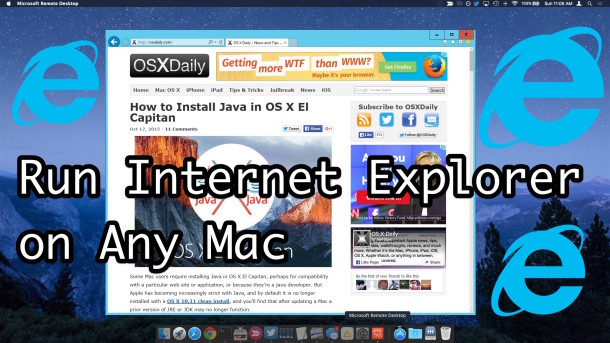This article explains how to download and install Firefox on a Mac.
- If you are updating from a previous version of Firefox, see Update Firefox to the latest release.
Internet Explorer For Mac Os X Download Internet Explorer for Mac is incredibly slow, buggy, prone to crashes and freezing and is woefully short of security settings. Since development finished in 2005, Internet Explorer for Mac doesn't offer even the most basic features that you would consider a prerequisite on any browser nowadays like tabs. Classilla is a free, open source browser for Mac OS 9. Classilla is bringing back web browser support to your classic Macintosh - built on WaMCom, a port of Mozilla to classic Macintosh systems, using the same technology underpinning the popular Firefox browser. It's completely free and it's open source, and it's standards-compliant.
- Visit the Firefox download page in any browser (for example, Safari). It will automatically detect the platform and language on your computer and recommend the best version of Firefox for you.
- Click .
- Note: If you want to have a choice of the language for your Firefox installation, click the Download options and other languages link instead.
- Once the download has completed, the file (Firefox.dmg) may open by itself and pop open a Finder window containing the Firefox application. Drag the Firefox icon on top of the Applications folder in order to copy it there.
- Note: If you do not see this window, open the Firefox.dmg file that you downloaded.
- After dragging Firefox to the Applications folder, hold down the control key while clicking in the window and select Eject 'Firefox' from the menu.
Tip: You can add Firefox to your dock for easy access. Just open your Applications folder and drag Firefox to the dock.
Firefox is now ready for use. Just click on its icon in the dock or Applications folder to start it.
When you first start up Firefox, you will be warned that you downloaded Firefox from the Internet. Because you download Firefox from the official site, click .
Upon installation, Firefox will not be your default browser, which you'll be notified about. That means that when you open a link in your mail application, an Internet shortcut, or HTML document, it will not open in Firefox. If you want Firefox to do those things, click . If you're just trying out Firefox or simply do not wish to set Firefox as your default browser, click .
Note: Microsoft is no longer developing ordistributing Internet Explorer for theMacintosh. UITS strongly recommends that you use adifferent browser, such as Safari or Firefox.
In Internet Explorer 5 for Mac OS or MacOS X, you can use the Collapse Toolbars function,Cmd-b, to hide or view the Address Bar, Button Bar,Favorites Bar, and Status Bar. In Internet Explorer 4 and later, youcan press Cmd-t to hide or view the Explorer Bar.
Note: In Internet Explorer 5, when you collapse thetoolbars, the Forward, Back, Stop, andRefresh buttons and the status indicator move to the ExplorerBar unless the Explorer Bar is hidden.

You may also determine individually which toolbars you want to displayor hide. The default items that are checked when Internet Explorer isinstalled are:
Firefox Or Internet Explorer For Mac Os X 10 12 Download
- Button Bar: This toolbar has the basic buttonsused to navigate on the Internet. In Internet Explorer 5,to customize this toolbar, from the View menu, selectCustomize Toolbars....
- Address Bar: This toolbar displays the address ofthe web page you are viewing, for example:
- Favorites Bar: You can use this toolbar forshortcuts to pages you frequently visit.
- Status Bar: This toolbar, which appears at thebottom of the window, displays which security zone you are in and thestatus of the web page while loading.
- Explorer Bar: This toolbar, which appears on theleft side of the window, is used for Favorites, History, Search,Scrapbook, and Page Holder functions.
Firefox Mac Os X Download
You can turn each of these toolbars on or off from the Viewmenu. If there is a check next to the toolbar option, then it isdisplayed.
